I was originally going to do a top 10 list for this post. Then I was going to do two top ten lists (one for books published in 2015 and one for those that weren’t). But then I decided top ten lists are overrated altogether. So we’re going the superlative route today! I did always love superlatives (even though I didn’t get any good ones in high school—and no, I’m totally not still bitter, shut up).
Because I make the rules here, I’m pulling from all books I read this year, regardless of when they were published, but most of these ended up being 2015 books anyway. Go figure!
Young Adult
Favorite Contemporary
 Pointe by Brandy Colbert
Pointe by Brandy Colbert
Colbert’s debut (from 2014)—about a ballerina whose best friend suddenly comes home after being kidnapped four years ago—absolutely gutted me. It’d be easy to call Theo a complex or flawed or compelling character, but none of those feel sufficient (or informative at all, really). I ached for Theo. I felt her in my every bone while reading, and I wanted nothing more than to soothe her pain and fight her demons and bring her joy.
This is not an easy read, but it’s a necessary one, a powerful-beautiful-wrenching one, an unforgettable one. And Colbert infuses so much compassion and empathy into these pages. She pulls you through the story almost gently but without ever letting you flinch away. Colbert writes as much grace as Theo dances with, and it’s a painful joy to read both.
Favorite Fantasy
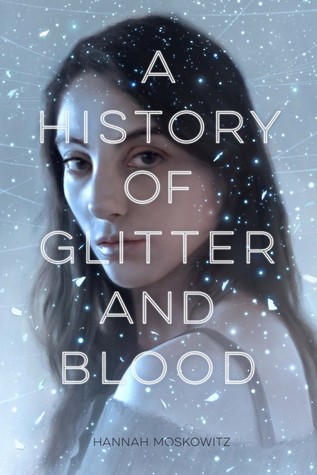 A History of Glitter and Blood by Hannah Moskowitz
A History of Glitter and Blood by Hannah Moskowitz
This is a book about fairies and gnomes and tightropers. About war and violence. Sex and power and desperation. Choice and choices.
It’s about history and fiction and where they meet and where they fight and where neither is enough but both are all that matter.
It’s about a girl and a boy and another boy and the one speck of a boy they’re trying (hoping, praying) to find.
It’s about writing a story that’s not yours but somewhat yours but does the somewhat make it yours enough to tell?
It’s about bodies and glitter. Broken bodies and missing glitter. Perfect bodies and more missing glitter.
It’s about life and death and both and neither.
It’s about Beckan and Scrap and Josha and Cricket, and you need to read it.
Favorite Science Fiction
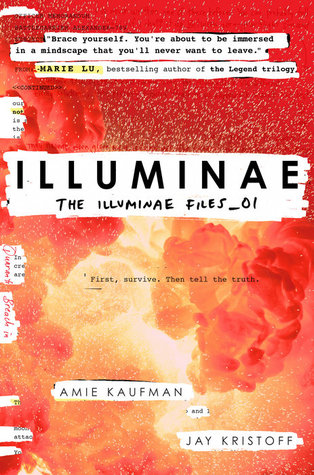 Illuminae by Amie Kaufman and Jay Kristoff
Illuminae by Amie Kaufman and Jay Kristoff
I don’t read a ton of sci fi and even less space-based sci fi, so it’s saying a lot that I capital-L LOVED this book. That it’s told entirely through “found documents”—emails, interviews, chat logs, audio transcripts, and some other, shall we say, less expected formats—was enough to hook me, but then Kaufman and Kristoff had to go and write a story that’s at times terrifying, breathless, hilarious, and philosophical, thus capturing my heart entire.
Illuminae also boasts one of my favorite ships of this year. Kady and Ezra start the book as newly minted exes, and it’s fascinating to watch their relationship evolve in the midst of multiple disasters and threats, not to mention almost certain doom.
Also, there’s a malfunctioning AI, a legitimately don’t-read-with-the-lights-out scary virus, and all sorts of shady intrigue.
Also also, Kady’s a hacker. Just in case you needed more reasons to read this thing and flail with me while we wait for book two.
Favorite Overall
 The Weight of Feathers by Anna-Marie McLemore
The Weight of Feathers by Anna-Marie McLemore
McLemore’s debut takes a familiar premise—a boy and a girl from two feuding families fall for each other—and creates one of the most tender, complicated, beautifully-rendered romances I’ve ever read. Though I did indeed swoon throughout, calling this book “swoon-worthy” would feel dismissive and woefully inadequate. Like I said when I finished it, this book “filled me up, filled me almost to bursting. The language is so delicate it hurts and so powerful it soothes. The relationships are all as layered, complicated, and wrenching as the language, too. There’s beauty tangled up with pain in every moment. This is a book that reaches into you and lifts you up so slowly and surely that you don’t even notice until you’re floating.”
I stand by every word of that, even months after finishing it. I still find myself drifting back to its world of mermaids and tightrope walkers, my eyes lingering on its spine, my fingers tracing the cover. Even now, all I want to do is go curl up in the haunting, lyrical, magical comfort I found there the first time.
TIE—Favorite 2016 Releases
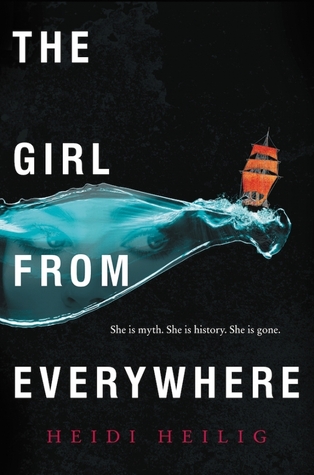 The Girl from Everywhere by Heidi Heilig
The Girl from Everywhere by Heidi Heilig
I am so grateful I stumbled upon an ARC of this one, and I am so sorry for everyone who has to wait until February to read it because it. is. so. good. Time traveling pirates! Hawaii! Fairy tales! Boys from fairy tales who will steal your heart! But also TIME TRAVELING LADY PIRATES who will steal it even harder.
Seriously, though, this has one of the most immediately engrossing plots I’ve read and it never lets up. The writing is beautiful (and beautifully suited to the story), and the characters are so dear I imagine they’ll feel like family before this series is over. (Oh, who am I kidding, they basically already do.)
And did I mention the time travel? It both makes intuitive sense and leads to unpredictable twisty-ness that will make you gasp at least fifty times. (I’m guesstimating.) Definitely get this one when it comes out and start reading immediately, although I should warn you you won’t want to stop until you’re finished.
 On the Edge of Gone by Corinne Duyvis
On the Edge of Gone by Corinne Duyvis
I beta’d this one, and I’ve been dyingggggg for people to read it ever since. Set in Amsterdam, this is an apocalyptic novel that explores (among other things) morality, equity, whose lives are worthy, and how we measure worth. It uses the apocalypse to the greatest possible effect by exposing, examining, and critiquing existing societal values.
It’s also super worth noting that this book stars an autistic protagonist written by an autistic author. If you (for some reason) need convincing that ownvoices books are important and wonderful, look no further than this one (which was written by the person who coined the term in the first place!).
On top of all the above goodness, the familial relationships are complex and difficult, the plot is tense throughout, and the stakes are literally astronomical.
This one doesn’t come out until March, but when it does I need everyone to read it because I’ve been waiting ages to shout about its brilliance with others.
Middle Grade
Favorite Contemporary
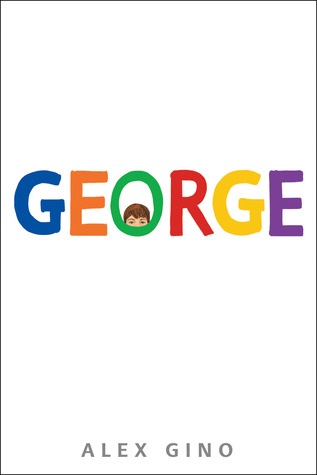 George by Alex Gino
George by Alex Gino
(Slight spoilers in this one.) This is possibly the cutest book I’ve ever read. Of course, it’s an incredibly important book, too, but I really want to talk about how freaking adorable it is. The core friendship, especially, had me beaming throughout. Melissa’s so passionate but nervous, and her BFF is so supportive. When they were running lines together? I died from cute.
I also don’t think I was happier for any character this year than when Melissa took the stage as Charlotte and dazzled everyone, even herself.
I’m so thrilled that trans kids have this book, one that’s written by someone trans themselves no less. It’s the perfect blend of sweet, earnest, eager, and joyful, just like Melissa.
Favorite Fantasy
 The Jumbies by Tracey Baptiste
The Jumbies by Tracey Baptiste
As I said when I first finished this, The Jumbies is spooky, citrus-soaked perfection. The story itself is tense and unpredictable with Baptiste zigging when I expected her to zag. The writing is gorgeous and so present throughout that I could hear the sea, feel the mud, taste the oranges. And the characters felt just as alive as the setting, just as vibrant and full.
Not to mention that there is some serious creepiness in here. Quietly creepy moments building and building on that slow dread until you’re suddenly wary of flipping every page because you know something worse surely lies ahead.
This Caribbean fairy tale—focused on family, history, and magic—is lovely with just a spritz of scary, which is pretty much my favorite combination.
Favorite Overall
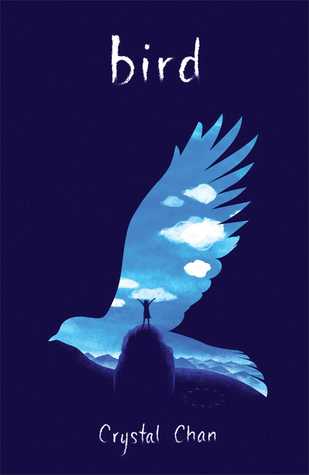 Bird by Crystal Chan
Bird by Crystal Chan
I read Bird fairly early in the year, but I can still feel the chills I got when reading this lyrical, penetrating book. I imagine I’d be happy to read even a research paper on the history of dental fillings by Chan, but it’s not just the writing that floored me.
Bird boasts easily my favorite familial relationships of the year: Jewel and her dead brother; Jewel and her silent grandfather; Jewel and her parents; Jewel’s parents and Jewel’s grandfather. Every one of these individual relationships are fraught and full of a love so strong it’s sometimes painful (for the characters and for us). Add to that one of my favorite friendships of all time, and you get a book bursting with relationships so intense and vivid you almost feel intrusive for watching them play out.
This is the kind of book I have a hard time talking about because nothing can capture the way it made me feel. Suffice it to say, I’ll keep it perched on my shelf, ready and waiting for any future kids who might be story-searching through my collection.
Adult
Favorite Fantasy
 The Fifth Season by N.K. Jemisin
The Fifth Season by N.K. Jemisin
Jemisin is a noted worldbuilding master and her latest is no exception. But while the Stillness—a continent plagued by intense seismic outbursts where apocalypses are regular parts of life—is endlessly fascinating, the characters were even more compelling. (Of course, Jemisin would likely be the first to tell you that characters cannot be divorced from the world they inhabit, but still. I don’t think she gets enough credit for her character work.)
I’m hesitant to give many more specifics. This is the kind of book best approached with as little foreknowledge as possible. Not because the story relies on twists or revelations, but because part of the joy is in sinking so far into this world that the vibrations of an overhead plane while reading makes your heart skip. Let yourself get to know these characters (and this world) with nothing to go on except the words Jemisin uses to introduce them and to tell their stories.
Be warned that this is the first in a series, though, and I guarantee you you’ll want—no, need the second one as soon as you finish.
Favorite Science Fiction
 Radiance by Catherynne M. Valente
Radiance by Catherynne M. Valente
This will end up being my last read of 2015 and one of my favorites of the entire year (and all time? Probably).
Radiance is set in an alternate universe where Hollywood operates on the Moon, kangaroos have taken quite well to a Chinese-owned Mars, and Venus is home to giant and mysterious callowhales.
The story revolves around the disappearance of documentarian Severin Unck during a shoot on Venus. It’s told through gossip magazine clips, home movie transcripts, debriefing interviews, snippets of Severin’s documentaries, scripts from her father’s more fantastic films, and more.
This is not a mere mystery, though. It’s a meditation on film, on seeing and being seen, on narrative, on reality. It’s drenched in the most alluring and strategic combination of aesthetics: noir, Hollywood glam, fairy tale, the Jazz Age, even vaudeville. All wrapped around a cast of characters you’ll adore, even—or maybe especially—when you aren’t sure you’ll ever really know the heart of them.


